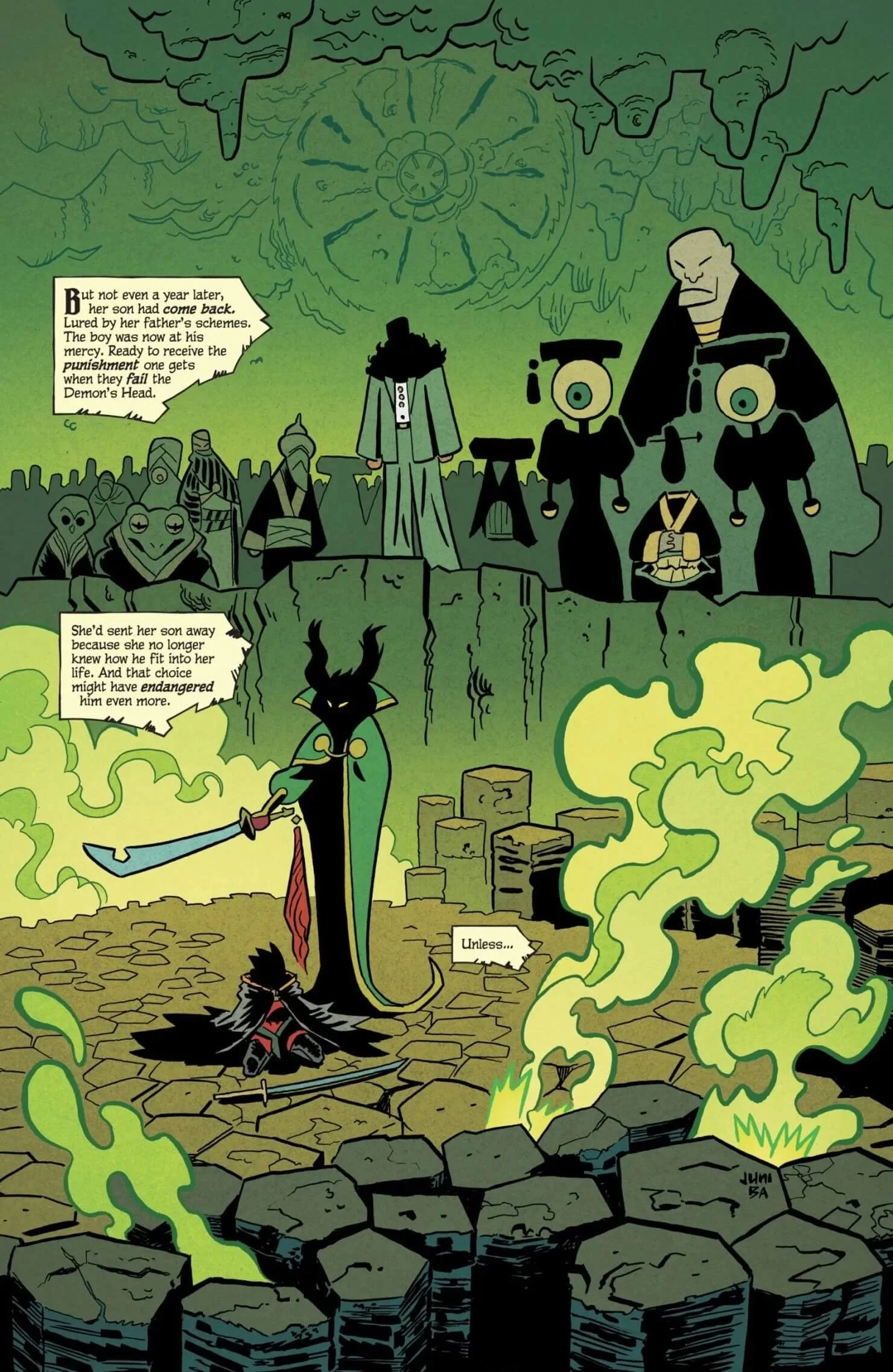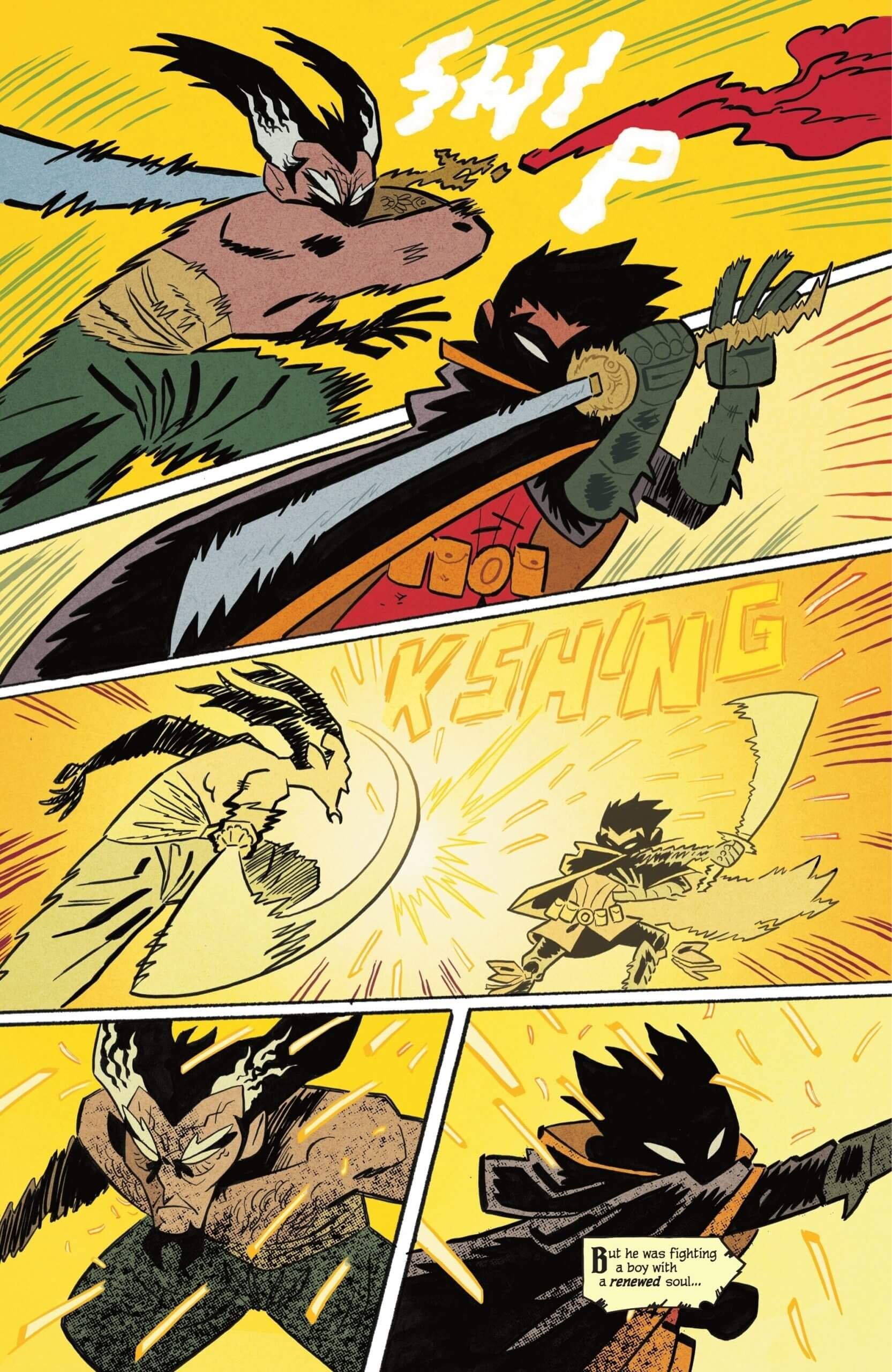Writer / Penciller: Juni Ba / Colour Artist: Chris O’ Halloran / Letterer: Aditya Bidikar / Editor: Chris Conroy / HC / Collects: The Boy Wonder #1-#5 / DC Comics’ Black Label
Review by: Paul Dunne
14th February (Released: 11th February 2025)
The Pitch: The young prince Damian Wayne was raised to be the heir to the fearsome League of Assassins. But everything changed when his father, the Batman, reclaimed him and brought him back to Gotham City. As Robin, Damian discovered he was merely one of several princes, preceded in the role by his brothers Nightwing, Red Hood, and Red Robin. Visionary writer/artist Juni Ba makes his mark on the timeless story of Batman and Robin, synthesizing the characters' complex history into an accessible and heartrending tale!
As comics readers we often run up against the thought that there can’t be anything left to say about a character, or perhaps more importantly for the medium, a new way to say the same things and reinforce our ideas and ideals, about a character. And then...
And then.
And then there’s always a team or creator who comes along with a singular vision, a new way to look at long-time favourites. Such a creator is Juni Ba, who is an artist who makes things his own, and indeed makes his own things. A left-field choice for the most important position in the rotating role that is Robin, sidekick to The Batman just in case you didn’t know. Ba has made some amazing works, and a lot of them in the last couple of years. From the acerbic and very funny Monkey Meat to Djeliya and Mobilis, Ba adds a unique flavour to his comics that whilst reminiscent of other creators has touches and accents all his own that no one could replicate. So what would this boy wonder bring to The Boy Wonder?
Before we get to that, there’s a question I’ve always had about creators having to make comics for long-running heroes (or villains) with long-running continuity and that is: how difficult is it to make their stories fit into the existing continuity? Ba solves the problem, if indeed it was a problem, by making an in-continuity Elseworlds. A fairytale, not so much once upon a time as once upon a crime, as an unnamed hostage relates a fable about a young prince who is left with his estranged father, a man who has filled the void of his birth son by adopting others along the way. Batman and his Robins are about to meet Damian Wayne, Son of The Daughter of The Demon.
In each issue, Damian’s early encounters with each of his new-found ‘brothers’ are told and their relationships with him are examined. And not just theirs to him, but also what they mean to Bruce. Ba keeps the fairy-tale mood going by making each issue a moral lesson for Damian, tempering his killer instinct with pieces of his father’s wisdom, filtered through his adopted sons. The book is one of juxtapositions, principally the almost child-like leanings of the art with the violent nature of Damian and his origins, which come back to haunt him. Damian swaps the Demon’s Head and The Daughter of The Demon for actual demons as the story leans into the supernatural. This would seem odd in many other Batman-related books, at least for me, because I’ve always felt Batman doesn’t lend himself to the supernatural. But as criminals are a cowardly, superstitious lot, so the more arcane elements would seem to fit here. In fact it’s fair to say the story would definitely not work without them.
It’s tough without knowing Ba’s process where the writer ends and the artist begins. As a writer, he creates an intricate and ornate web. It’s story time, and Ba is speaking to us with a sinister yet strangely comforting voice, a raspy voice that could be a child’s or a grandmother’s… the kind whose teeth look sharp and eyes look big. As a storyteller, he’s keenly aware of the increasing meta-fiction that comics can – and often do – become. By positioning the story as one within another story, he touches on one of the most important parts of the Batman mythos… that it’s how others react to Batman and the Bat-Family that makes them so potent. The myth stays a myth when you treat it like one and Ba enriches the myth, giving it charge by telling this corner of it and telling it in this style. And what a style it is! I’ll confess to not knowing enough about Senegal and the culture Ba hails from, so I don’t know how much it influences his work. To my eye trained only in comics and film, if I’m honest) there are distinct traces of Lotte Reiniger’s Prince Ahmed, the oldest surviving animated film, made by a German and based loosely on a story from One Thousand and One Nights, a heady mix of influences. At the beginning of the book, there is a quote from Darwyn Cooke and this feels like a loving tribute to him. Add to this, perhaps, a stylistic nod to Genndy Tartakovsky’s Samurai Jack and you have all the ingredients for something fun and atmospheric. This means that the book has an animated feel that keeps the energy up, making the pages ever-turnable. It’s a strange effect, leaning into one medium to make another more engrossing, if indeed that is the plan at play. O’Halloran’s colours cement that Lotte Reiniger look, with the negative space of the whites against the brighter hues of this version of Gotham, itself a fairy-tale village writ large. In those brighter hues, one feels Dave Stewart’s influence, which in turn accentuates the Cooke influence… All these things, boiling away in the cauldron of Ba’s mind! Bidikar creates a gorgeous lettering job for the book. It adds to the animated feel and strangely, reminded me of the 60s ‘Pow-Zap!’ Batman show. This might be one of the most accessible books in the Batman canon for a while, one that will hold up to repeated reading, and that will give you a new way to view Damian and the Bat-Family. A Wonder, no doubt!
The Boy Wonder is available at your local comic shop from 12th February.







